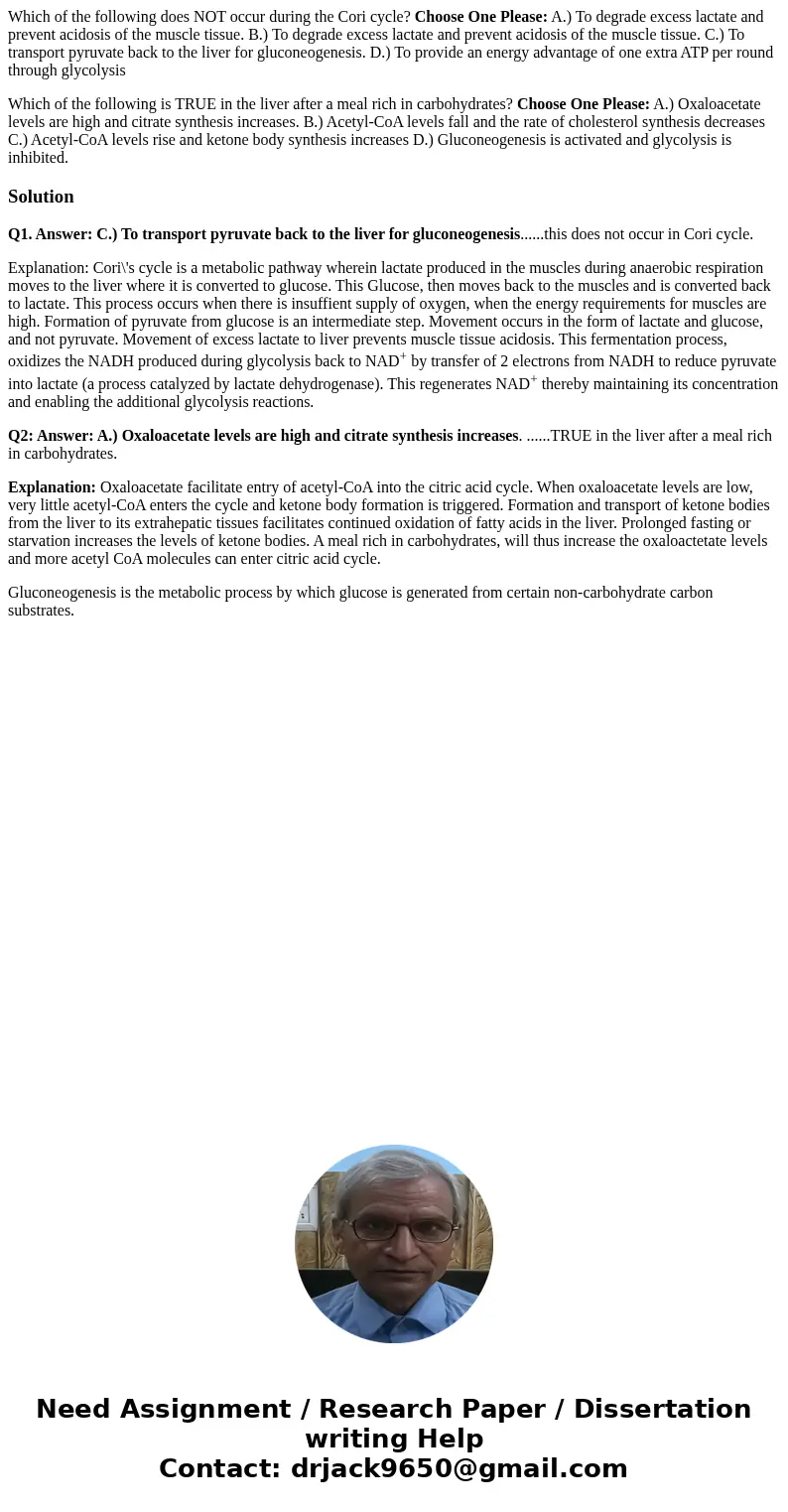Which of the following does NOT occur during the Cori cycle
Which of the following does NOT occur during the Cori cycle? Choose One Please: A.) To degrade excess lactate and prevent acidosis of the muscle tissue. B.) To degrade excess lactate and prevent acidosis of the muscle tissue. C.) To transport pyruvate back to the liver for gluconeogenesis. D.) To provide an energy advantage of one extra ATP per round through glycolysis
Which of the following is TRUE in the liver after a meal rich in carbohydrates? Choose One Please: A.) Oxaloacetate levels are high and citrate synthesis increases. B.) Acetyl-CoA levels fall and the rate of cholesterol synthesis decreases C.) Acetyl-CoA levels rise and ketone body synthesis increases D.) Gluconeogenesis is activated and glycolysis is inhibited.
Solution
Q1. Answer: C.) To transport pyruvate back to the liver for gluconeogenesis......this does not occur in Cori cycle.
Explanation: Cori\'s cycle is a metabolic pathway wherein lactate produced in the muscles during anaerobic respiration moves to the liver where it is converted to glucose. This Glucose, then moves back to the muscles and is converted back to lactate. This process occurs when there is insuffient supply of oxygen, when the energy requirements for muscles are high. Formation of pyruvate from glucose is an intermediate step. Movement occurs in the form of lactate and glucose, and not pyruvate. Movement of excess lactate to liver prevents muscle tissue acidosis. This fermentation process, oxidizes the NADH produced during glycolysis back to NAD+ by transfer of 2 electrons from NADH to reduce pyruvate into lactate (a process catalyzed by lactate dehydrogenase). This regenerates NAD+ thereby maintaining its concentration and enabling the additional glycolysis reactions.
Q2: Answer: A.) Oxaloacetate levels are high and citrate synthesis increases. ......TRUE in the liver after a meal rich in carbohydrates.
Explanation: Oxaloacetate facilitate entry of acetyl-CoA into the citric acid cycle. When oxaloacetate levels are low, very little acetyl-CoA enters the cycle and ketone body formation is triggered. Formation and transport of ketone bodies from the liver to its extrahepatic tissues facilitates continued oxidation of fatty acids in the liver. Prolonged fasting or starvation increases the levels of ketone bodies. A meal rich in carbohydrates, will thus increase the oxaloactetate levels and more acetyl CoA molecules can enter citric acid cycle.
Gluconeogenesis is the metabolic process by which glucose is generated from certain non-carbohydrate carbon substrates.

 Homework Sourse
Homework Sourse